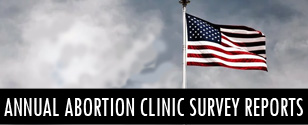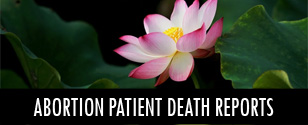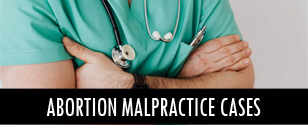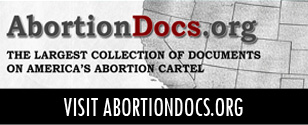Sonogram images, sworn statements show that Women’s Health Care Services intentionally underestimates fetal age and viability to avoid compliance with Kansas law.
(See our full report posted below the video.)
By Cheryl Sullenger
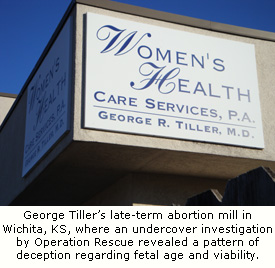
Operation Rescue recently conducted an undercover investigation of late-term abortions at George Tiller’s Women’s Health Care Services, in Wichita, Kansas, focusing on the determination of fetal age and viability. Operation Rescue discovered compelling evidence that WHCS intentionally underestimates fetal age, and therefore viability, in order to avoid compliance with the Kansas ban on post-viability abortions.
Background
Operation Rescue interviewed several former Tiller patients concerning the determination of fetal age and viability, and had reason to believe that Tiller’s employees routinely underestimated the gestational age of pregnancies, and/or determined that viable pregnancies were non-viable for no reason other than to avoid having to obtain the concurring opinion from a second Kansas physician that the late-abortion met the strict exceptions allowed in K.S.A. 65-6703.
That law states in part:
No person shall perform or induce an abortion when the fetus is viable unless such person is a physician and has a documented referral from another physician not legally or financially affiliated with the physician performing or inducing the abortion and both physicians determine that: (1) The abortion is necessary to preserve the life of the pregnant woman; or (2) a continuation of the pregnancy will cause a substantial and irreversible impairment of a major bodily function of the pregnant woman.
If the physician determines the gestational age of the fetus is 22 or more weeks, prior to performing an abortion upon the woman the physician shall determine if the fetus is viable. [Read full text.]
Viability is defined by law as when a baby can survive for an indefinite period outside the womb with natural or artificial life-supportive measures. Babies have been known to survive at 22 weeks and earlier, although 23 weeks is generally considered the threshold of viability in the United States, where there exists superior neonatal technology. At 24 weeks, the viability of healthy babies born to healthy mothers is undeniable in the medical community worldwide. Kansas law implies that each case be individually reviewed and tested for viability beginning at 22 weeks gestation.
Mental health risks are interpreted to be included in K.S.A. 65-6703 as a “major bodily function” as long as the condition is both substantial and irreversible.
Examples of violations surface
Most notable among those interviewed were Michelle Armesto and a botched abortion victim referred to as “Patient S.”
Mrs. Armesto, (maiden name Berge), came forward in 2007, and testified before a joint legislative committee that she was given an abortion at WHCS against her will on May 13, 2003, in her 24th week of pregnancy. She and her mother arrived late for her abortion appointment and she missed the time when the other late-term abortion patients saw the second physician. Mrs. Armesto discovered only after receiving her medical records years later that abortionist Shelley Sella had made a determination that her baby was non-viable. [View the document.] Mrs. Armesto testified that she was in good health with an uncomplicated pregnancy and had no reason to believe that her baby was not viable.
Patient S. had an abortion at WHCS in September, 2008. She told Operation Rescue that she was 23 weeks pregnant at the time of the abortion, but WHCS staff members told her that she was only 19 weeks. She said she knew that was wrong, but did not say anything fearing the price of the abortion would go up if she did. Patient S. received no concurring signature from a second Kansas physician before her abortion that ended in life-threatening complications and an emergency hospitalization.
The investigation begins

A pregnant volunteer, who we will refer to only by her first name, Shaye, offered to make an appointment for and procure a sonogram at Women’s Health Care Services.
Shaye had been under the care of a physician prior to the investigation. She and her pregnancy were found to be healthy and progressing normally, without complications.
Gestational age is often determined using the first day of a woman’s last menstrual period (LMP). For Shaye, that date was April 18, 2008. According to that date, Shaye would have been 25 weeks 5 days along, well past the 22 weeks when viability must be determined under Kansas law.
The undercover aspect of this investigation was conducted on October 16-17, 2008. All telephone calls made to WHCS were taped.
Misleading information from WHCS employee
On October 16, Shaye placed a phone call to WHCS in an attempt to schedule an abortion. She spoke with Tiller employee Diane Warren, who erroneously told her that up to the 24th week of pregnancy, Kansas law says abortion is a woman’s choice.
Warren seemed confused about exactly how to calculate Shaye’s pregnancy using her LMP and first told Shaye that she was between 31 and 32 weeks of pregnancy. [Listen to Warren say this.] When Shaye told her she could not be that far along, Warren told Shaye to procure a sonogram and bring her the BPD number so that they could determine whether they would do the abortion and how they would set her fee.
The BPD number is the Biparietal Diameter, or the measurement across the baby’s head that can be used to determine fetal age.
Shaye was given an appointment for a sonogram the next day, on October 17, 2008.
Sonogram Measurement Trashed
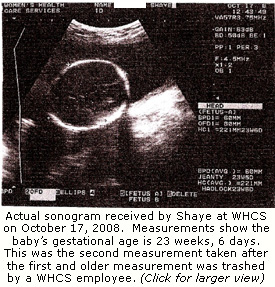
The following is an excerpt from a sworn statement made by Shaye concerning her experience at WHCS that day.
The woman who gave me the ultrasound at WHCS was Lindsey Alejandro. She informed me that my baby was 24 weeks, 6 days gestation. I told her that I did not think I could be that far along, so she told me she was going to try something else.
At that point, Ms. Alejandro tore off the ultrasound photo that showed 24 weeks, 6 days gestation and threw it into a trashcan. She remeasured the baby from another angle and the measurements came up as 23 weeks gestation.
Ms. Alejandro told me that I could have the abortion because it is a woman’s choice up until 24 weeks.
Shaye was directed to another WHCS employee, Deborah Esquina, and given an appointment for an abortion at WHCS for the following week with abortionist LeRoy Carhart, and told her abortion would cost $3500 – up front – plus $65 for medication. She was instructed to return on Monday, October 20, for her final consultation, and was told the actual abortion would begin on Tuesday, October 21, 2008. She received no appointment with a second Kansas physician for the purpose of concurring on the medical necessity of Shaye’s pregnancy, even though she would have been 24 weeks, 3 days at the time of the abortion according to WHCS’s own second and lower determination of fetal age. This was past the medically accepted threshold of viability.
WHCS employee Linda Joslin took Shaye’s medical history and was aware that she and her pregnancy were healthy and without physical or mental health complications. WHCS was specifically aware that Shaye did not suffer from depression.
Two more sonograms confirm later gestational age

In order to confirm the actual gestational age of Shaye’s baby, she received a second sonogram on October 17, 2008, at Via Christi-St. Joseph’s Hospital in Wichita. According to that hospital’s measurements, Shaye’s pregnancy was 24 weeks 3 days. This would have placed the gestational age of Shaye’s baby at 25 completed weeks on the day the abortion was scheduled to begin. [Refer to video.]
As an extra confirmation, Shaye received a third sonogram on October 17, 2008, from Baby Waves in Wichita, which determined that Shaye’s pregnancy was 24 weeks, 4 days. This would have placed the gestational age of her baby at 25 weeks, 1 day, on the day the abortion was to begin. [Refer to video.]
According to four independent determinations, including Shaye’s LMP, the first (and discarded) WHCS measurement, and sonograms from Via Christi Hospital and Baby Waves, Shaye’s baby was past the most liberal threshold of viability.
The only measurement that actually placed the gestational age of Shaye’s baby under 24 weeks, when there could still be some question as to viability, was the second ultrasound measurement taken after Tiller employee Lindsey Alejandro tore off and threw in the trashcan measurements that showed Shaye’s baby was clearly past the threshold of viability. That was the measurement used to schedule an abortion for Shaye’s baby.
But even that measurement was beyond the 22-week barrier encoded in Kansas law at which time viability must be determined, and would have placed her pregnancy at 24 weeks, 3 days – beyond the most liberal threshold of viability – at the time the abortion was scheduled to begin.
Shaye later procured copies of her sonogram records from all three locations and provided them to Operation Rescue with permission to publish them.
Conclusion
Kansas law states that “no person shall perform an abortion when the fetus is viable.”
Health and viability: Shaye’s baby was past the medically accepted threshold of viability according to four independent determinations. There was no condition that threatened Shaye’s health, either physically or mentally. In fact, as of this writing, Shaye is enjoying a healthy pregnancy, and is expecting a healthy baby boy in early February, 2009.
Misrepresentation of Kansas law: Shaye inteacted with a total of 4 WHCS employees, none of which gave her correct information about Kansas law. At least two employees of Women’s Health Care Services misinformed Shaye that before the 24th week of pregnancy, Kansas law says abortion is a woman’s choice. However, Kansas law places the limit of unrestricted abortion at 22 weeks gestation, when viability is possible and a determination of viability must be made. The 24th week of pregnancy is not even mentioned in Kansas law.
Intentional underestimation of fetal age: When the first determination of fetal age did not suit them, a WHCS employee destroyed that measurement and came up with a new, earlier fetal age, and advised Shaye that she could proceed with the abortion, knowing full well that her baby was more beyond the threshold of viability.
Violation of second concurring physician requirement: Shaye all too easily obtained an appointment for a post-viability abortion without being referred to or obtaining the signature of a second Kansas physician as required by law.
Violations of Informed Consent: Kansas also has an informed consent law that requires that abortionists tell women the gestation age of their babies, among other things. Women’s rights to informed consent are violated when WHCS misrepresents Kansas law to women considering abortions. This misrepresentation of the law, coupled with the intentional underestimation of fetal age and viability, forces women to make serious, life-altering decisions based on false information, violating the purpose of the informed consent statute.
Shaye told Operation Rescue that it was her understanding that WHCS would have stopped at nothing to give her an abortion, even offering her a number to call for financial aid so money – a hefty $3500 fee – would not be an issue that would prevent her from getting the abortion.
Shaye’s case is not an isolated incident. When taken into consideration with interviews from other former WHCS patients, it shows a pattern of abuse. There is every reason to believe that the gestational age of pregnancies and viability is routinely and intentionally underestimated at Tiller’s abortion clinic to avoid having to comply with Kansas law.
It is clear that WHCS coyly attempts to appear as if they are following the law, without actually doing so, even according to evidence in their own records presented here. WHCS employees lead women to believe that their late-term abortions are being done in compliance with the law when, in fact, the evidence in this report shows that they are not.
This kind of deception is placing women’s lives in danger, since the risks of serious abortion complications increase as the gestational age of the baby increases. There are physical dangers to doing abortions on women whose gestational age has been miscalculated. In addition, the deception of WHCS is also needlessly costing the lives of viable babies that the law was enacted to protect.
Operation Rescue calls on Attorney General Steve Six to launch an immediate investigation into illegal late-term abortions based on deceptive determinations of non-viability. We also renew our call on the Kansas State Board of Healing Arts to suspend the Kansas medical licenses of Tiller and all other abortionists operating at WHCS, and close the abortion clinic pending further investigation and possible criminal prosecution.



